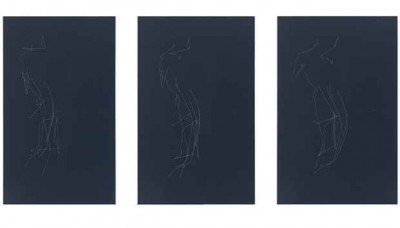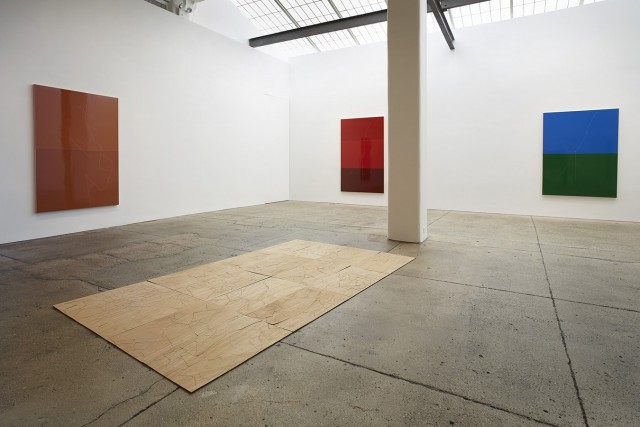Galerie Lelong
528 West 26th St. between Tenth & Eleventh Aves.
Through October 18, free, 10:00 am – 6:00 pm
212-315-0470
www.galerielelong.com
www.kateshepherd.com
To some artists, sharing their process is key to understanding their work, while others let the final results speak for themselves. In lifelong New Yorker Kate Shepherd’s latest solo show at Galerie Lelong, “Fwd: The Telephone Game,” Shepherd insists that the “how” is central to the “what.” “It’s essential to mention the elements that were employed to make these paintings, the ‘actors,’ so to speak,” she writes in the slim exhibition catalog, which details the artist’s use of the 3D modeling software SketchUp to manipulate images of virtual 3D-game nude model and a 1931-32 Alvar Aalto Paimio chair. With the help of assistant Anees Assali in the Middle East, Shepherd used the application to create lush yet simple, emotionally powerful white-line drawings on wood painted black, red, blue, green, gray, and other colors, often divided into horizontal sections. Shepherd was precise about what the final works looked like, allowing randomness only up to a point while also referencing Pablo Picasso, Henry Moore, Edgar Degas, and Mies van der Rohe. To further the revelation of process, the paintings have such titles as “Womantorse daz3d2 Draw-on-1.s20.lrfr(right panel)” and “WirethreadAaltohangman2.s6(red wire sculpture),” the names of the files themselves sent between her and Assali.

Kate Shepherd’s “Womantorse daz3d2 Draw-on-1.s20.lrfr(right panel)” is part of “Fwd: The Telephone Game” at Galerie Lelong
“Looks too much like a gaping mouth, funny nose / I’m not doing it,” she explains in an e-mail to Assali about one piece that she then changed significantly. The title of the show comes from the game of telephone, in which participants start with one phrase or sentence and then see what they end up with as it’s passed down through a large group. Shepherd began with the images of the model and the chair and then, via electronic correspondence with Assali, the opinions of friends and colleagues, and digital manipulation, ended up with something very different. The results are rather beautiful — elegant, broken lines on wood that evoke love and romance, loneliness and mystery. (The show is supplemented with some of Shepherd’s “cracked” paintings, including one on the floor, a more physical representation of what she is doing with the hanging lined pieces.) But is the potential enjoyment of the works enhanced or hampered by the detailed description of how they were created? Tech geeks might get a huge kick out of Shepherd’s process, while others won’t care one iota. Either way, “Fwd: The Telephone Game” is a beguiling presentation.
